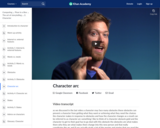
Character transformation and their needs.
- Subject:
- Applied Science
- Arts and Humanities
- Computer Science
- Graphic Arts
- Material Type:
- Lesson
- Provider:
- Khan Academy
- Provider Set:
- Pixar
- Author:
- Disney Pixar
- Khan Academy
- Date Added:
- 07/14/2021

Character transformation and their needs.

The Three Little Pigs is told orally with pictures only and the children are asked to make predictions based on text features. At the end, the children are asked to compare the houses from the story to where they live. The children will enjoy a puppet show of the Three Little Pigs. Teachers can use this video to teach a sequence of events and story elements.
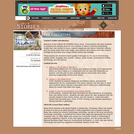
Welcome to the CIRCLE OF STORIES lesson plans. These lessons will allow students to examine the complex and rich oral tradition of Native American storytelling, create their own stories to share, explore indigenous and Native American cultures and the issues which face them today, and research and explore their own cultural heritage by recording their unique family stories and heritage. These lessons are directed toward grades 6 through 12, for use in the following subject areas: language arts, theater, history, social studies, multicultural studies, technology, and life science.
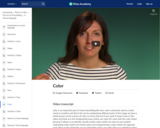
How color is used in visual storytelling.

About the Arts, Care & Connection Lesson Collection: Arts for Learning Northwest collaborated with Oregon teaching artists on this collection of arts integration modules designed for K-5 students, with integrated social emotional learning content in the areas of dance, visual arts, theater, and music.

Creating Native American Myths and Legends is a five-part lesson plan asking students to research a traditional or modern Native American myth or legend story and then turn that story, or create an original story into a Pixton graphic cartoon representation. The lesson provides an overview of the basic elements of myths and legends so that students are aware of the structure and key components of each as it relates to Native American storytelling. While traditional methods of Native American storytelling rely heavily on oral storytelling, modern graphic novel collections of stories such as Trickster: Native American Tales are providing a new way of recording traditional stories and providing an outlet for new creations for modern Native American artists and storytellers. The project follows an adapted inquiry model and uses the graphic cartoon generator software website Pixton.com, as well as GSuite for Education.

This unit is about the role of the curator in the art world and their power to confer value and legitimacy within a culture. The intended audience for this unit is a high school entry level art class entitled Exploring Visual Design taken by all high school grade levels. The goal of the unit will ultimately be to address Anchor Standard 6 in the National Core Art Standards by asking students to curate their own art exhibit that communicates a message and conveys meaning to their intended audience. Along the way, students will also explore themes of identity, community and representation as they prepare for their role as curator.
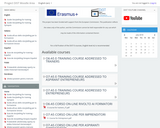
Here you can find a Guide, addressed to teachers on the use of storytelling and of the videos produced for training purposes, within the project DIST.
An E-course addressed to trainers on how to enhance the sense of initiative and entrepreneurship in their students,
2 E-courses, one addressed to aspirant entrepreneurs and one addressed to entrepreneurs, to enhance their sense of initiative and entrepreneurship.
Some Videos featuring young and valuable European managers telling their professional history.
Other information about the DIST project here www.distproject.eu
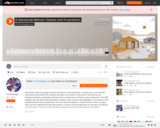
Oftentimes, when we engage with the framework of decolonization, it comes from a very specific theoretical strand within the academy and does not include or interconnect with the lives of Indigenous Peoples, especially those who have survived and continue to survive genocide. This OER engages with the idea of decolonization through a short narrative that highlights a conversation from a grandchild and their grandmother. The story does not adhere to a linear format of time, yet goes back and forth between the past and present, an almost cyclical reflections as one plans and figures out their future. The work of decolonization requires an entire epistemological, ontological, axiological, and methodological shift internally and externally. This is simply the beginning of a lifetime commitment.
Glossary
ahéhee’ – thank you
k’ad – phrase used to end a conversation or start a new one
kinaaldá – women becoming ceremony
nahjee’ – phrase used for expressing that I’m finished and/or go away.
shídeezhí – my little sister
shimásaní – my grandma
shiyazhí – my little one
yadilah – phrase used in frustration
References
Smith, L. T. (2012). Decolonizing methodologies: Research and Indigenous peoples. Zed Books.
Tuck, E., & Yang, K. (2012). Decolonization is not a metaphor. Decolonization: Indigeneity, Education, & Society, 1(1), 1-40.
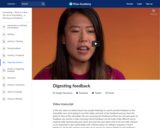
Feedback and notes.
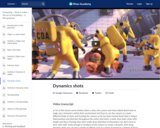
Learn more www.pixarinabox.org.
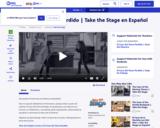
¡Encuentra el tema de una historia actuándolo!
Saca tu lupa de detectives en formación, porque estás a punto de resolver El Caso del Tema Perdido. Al representar una historia con Carmen y el Detective J, recordarás pistas importantes. ¡Estas pistas te ayudarán a encontrar el tema de la historia!
Objetivo de Aprendizaje: inferir el tema de una obra, distinguiendo el tema del asunto.

This is a short collection, which features the work of students in Dr. Mark Kinney's course, ICST 471, ANTH 470, SOCI 493: Enculturation and Spiritual Development Across Cultures, taught at Evangel University, 2022-2023. The course has used the open textbook Discovering Cultural Anthropology by Antonia M. Santangelo.

The 11th grade learning experience consists of 7 mostly month-long units aligned to the Common Core State Standards, with available course material for teachers and students easily accessible online. Over the course of the year there is a steady progression in text complexity levels, sophistication of writing tasks, speaking and listening activities, and increased opportunities for independent and collaborative work. Rubrics and student models accompany many writing assignments.Throughout the 11th grade year, in addition to the Common Read texts that the whole class reads together, students each select an Independent Reading book and engage with peers in group Book Talks. Students move from learning the class rituals and routines and genre features of argument writing in Unit 11.1 to learning about narrative and informational genres in Unit 11.2: The American Short Story. Teacher resources provide additional materials to support each unit.

In this unit, students will produce two major pieces of work. The first piece is an argument essay that grapples with one of the core questions of the unit: who are we, and who have we become because of the ways we connect? Students will read, annotate, and discuss several texts together as they consider the issues surrounding this question, and they will also research and annotate independently as they search for more evidence and perspectives to help deepen their ideas. They will also create a museum exhibit as part of a team. The exhibit project will help students identify what's worth preserving about their unique place in history.
PROJECT UNITS
This project unit continues to meet the English Language Arts standards as it also utilizes the learning principles established by the Partnership for 21st Century Skills. It is designed to support deep content knowledge and perseverance through long-term project planning and implementation. In addition, it will help students to recognize, develop, and apply the planning, teamwork, communication, and presentation skills they will use while presenting a final product to their class and/or the greater community. This real-world project-based activity will give students an opportunity to apply the skills they have been learning all year and will guide them to develop the motivation, knowledge, and skills they need in order to be college and career ready.
ACCOMPLISHMENTS
Students write an argument paper where they develop a claim about current culture as it has been influenced by digital connectivity.
Students participate in a group project to create a museum exhibit that captures a unique place, time, and relationship to technology. Students acknowledge the differing perspectives of each group member and use those perspectives to synthesize one cohesive visual argument together.
GUIDING QUESTIONS
These questions are a guide to stimulate thinking, discussion, and writing on the themes and ideas in the unit. For complete and thoughtful answers and for meaningful discussions, students must use evidence based on careful reading of the texts.
What does it mean to be digitally connected?
What are the implications of living in a world where everyone is digitally connected?
How does the availability of instant connectivity shape our relationships?
What does our Internet use reveal about people's needs as humans?
BENCHMARK ASSESSMENT: Cold Read
During this unit, on a day of your choosing, we recommend you administer a Cold Read to assess students’ reading comprehension. For this assessment, students read a text they have never seen before and then respond to multiple-choice and constructed-response questions. The assessment is not included in this course materials.

During this lesson, students will meet with their museum exhibit team to refine and develop their exhibit's theme. They will decide what stance they want to take on the issue of the Digital Native's relationship to technology.

In this lesson, students will work independently with their museum exhibit teams. Their challenge will be to use this time efficiently so they get the maximum possible benefit.

In this lesson, students will consider the ways good museum exhibits break their stories into beginnings, middles, and ends to create flow and engagement. They will also work on their museum exhibit.

The 12th grade learning experience consists of 7 mostly month-long units aligned to the Common Core State Standards, with available course material for teachers and students easily accessible online. Over the course of the year there is a steady progression in text complexity levels, sophistication of writing tasks, speaking and listening activities, and increased opportunities for independent and collaborative work. Rubrics and student models accompany many writing assignments.Throughout the 12th grade year, in addition to the Common Read texts that the whole class reads together, students each select an Independent Reading book and engage with peers in group Book Talks. Language study is embedded in every 12th grade unit as students use annotation to closely review aspects of each text. Teacher resources provide additional materials to support each unit.

In our lives, we are constantly telling stories to ourselves and to others in an attempt to both understand our experiences and present our best selves to others. But how do we tell a story about ourselves that is both true and positive? How do we hold ourselves up in the best possible light, while still being honest about our struggles and our flaws? Students will explore ways of interpreting and portraying personal experiences. They'll read Chinua Achebe's novel Things Fall Apart , analyzing the text through the eyes of one character. They'll get to know that character's flaws and strengths, and they'll tell part of the story from that character's perspective, doing their best to tell an honest tale that presents their character's best side. Then they'll explore their own stories, crafting a personal narrative about an important moment of learning in his or her life.
ACCOMPLISHMENTS
Students read and analyze Chinua Achebe’s Things Fall Apart , viewing the events and conflicts of the novel through the eyes of one of the central characters.
Students write a two-part narrative project: one narrative told through their character’s perspective and one personal narrative about an incident in their own life.
GUIDING QUESTIONS
These questions are a guide to stimulate thinking, discussion, and writing on the themes and ideas in the unit. For complete and thoughtful answers and for meaningful discussions, students must use evidence based on careful reading of the texts.
How do our conflicts shape and show our character?
How can we tell a story about ourselves that’s both honest and positive?
How do definitions of justice change depending on the culture you live in?
What are ways individuals can react to a changing world? To a community that doesn’t accept us?
BENCHMARK ASSESSMENT: Cold Read
During this unit, on a day of your choosing, we recommend you administer a Cold Read to assess students’ reading comprehension. For this assessment, students read a text they have never seen before and then respond to multiple-choice and constructed-response questions. The assessment is not included in this course materials.